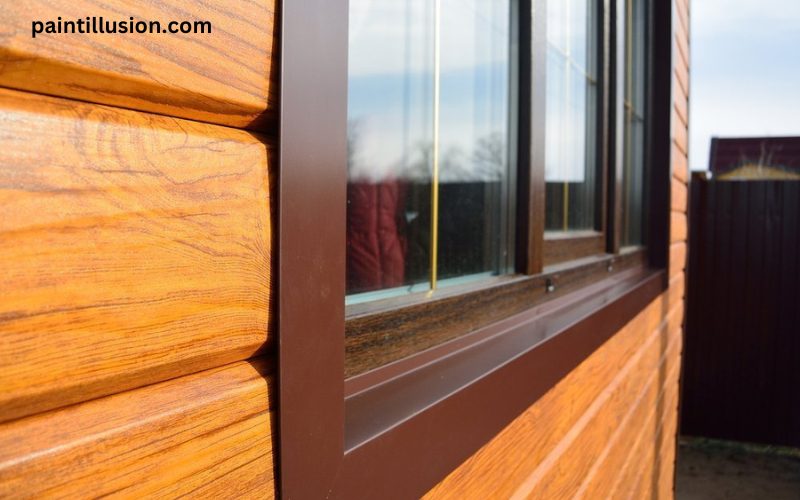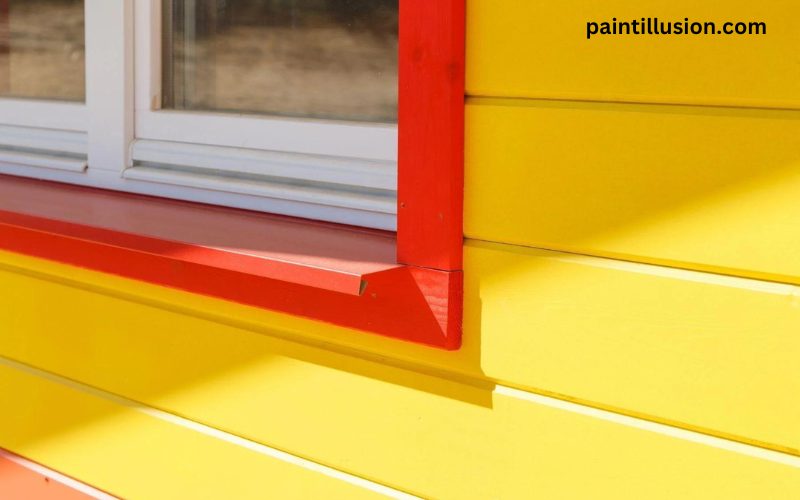PVC trim is a popular choice for many homeowners due to its durability, versatility, and low maintenance. However, if you’re looking to change the color of your PVC trim or give it a fresh new look, you may be wondering if it’s possible to paint PVC trim. The good news is that yes, you can paint PVC trim! In this article, we’ll explore the benefits of painting PVC trim, how to choose the right paint, prepare the trim for painting, and provide you with a step-by-step guide to achieve a smooth and durable paint finish. So, let’s dive in and learn how to transform your PVC trim with a fresh coat of paint!
Benefits of Painting PVC Trim
Painting your PVC trim offers several benefits. Firstly, it allows you to customize the color of your trim to match your personal style and the overall aesthetic of your home. Whether you prefer a classic white or a bold and vibrant color, painting your PVC trim gives you the freedom to express your creativity. Additionally, painting PVC trim can help protect it from the elements, including UV rays, which can cause fading and discoloration over time. By applying a high-quality paint, you can enhance the durability and longevity of your PVC trim, ensuring that it looks great for years to come.
Choosing the Right Paint for PVC Trim
When it comes to painting PVC trim, choosing the right paint is crucial for achieving a successful and long-lasting finish. Look for paints that are specifically formulated for use on PVC and other plastics. These paints are designed to adhere to the surface of PVC trim, providing excellent coverage and durability. Additionally, opt for paints that offer UV protection to prevent fading and discoloration. Water-based acrylic paints are a popular choice for painting PVC trim as they dry quickly, have low odor, and are easy to clean up. Consider using a paint with a satin or semi-gloss finish, as these finishes provide a smooth and attractive look while also offering good resistance against dirt and stains.

Preparing PVC Trim for Painting
Proper preparation is key to achieving a professional-looking paint finish on PVC trim. Start by thoroughly cleaning the trim using a mild detergent and water solution to remove any dirt, grease, or debris. Use a soft-bristle brush or sponge to scrub the surface gently. Rinse the trim thoroughly with clean water and allow it to dry completely before proceeding. Next, sand the PVC trim lightly with fine-grit sandpaper to create a rough surface that the paint can adhere to. Be careful not to sand too aggressively, as this may damage the trim. After sanding, wipe away any dust with a clean, damp cloth. Finally, apply a primer specifically designed for use on PVC trim. The primer will help the paint adhere better to the surface and ensure a smooth and even finish.
Step-by-Step Guide to Painting PVC Trim
- Gather your materials – Before you start painting, make sure you have all the necessary materials on hand. This includes paint, primer, brushes or rollers, sandpaper, a drop cloth or plastic sheeting to protect surrounding surfaces, and painter’s tape to mask off areas you don’t want to paint.
- Prepare the area – Remove any furniture or objects from the area where you’ll be painting. Cover the surrounding surfaces with a drop cloth or plastic sheeting to protect them from paint splatters. Use painter’s tape to mask off areas such as windows, doors, and trim that you don’t want to paint.
- Apply the primer – Using a brush or roller, apply an even coat of primer to the PVC trim. Follow the manufacturer’s instructions for drying time and re-coating. Allow the primer to dry completely before moving on to the next step.
- Paint the trim – Once the primer is dry, it’s time to paint! Stir the paint thoroughly to ensure an even consistency. Apply the paint to the PVC trim using a brush or roller, working in smooth and even strokes. Start from the top and work your way down, overlapping each stroke slightly for a seamless finish. Allow the paint to dry completely between coats, and apply additional coats as needed for full coverage.
- Finishing touches – Once the final coat of paint is dry, remove the painter’s tape and inspect the painted PVC trim for any touch-ups or imperfections. Use a small brush to fix any areas that need attention. Finally, clean up your tools and dispose of any leftover paint and materials properly.
Tips for Achieving a Smooth and Durable Paint Finish on PVC Trim
- Ensure that the PVC trim is clean and free from any dirt or debris before painting.
- Use high-quality paintbrushes or rollers for a smooth and even application.
- Apply thin coats of paint, allowing each coat to dry completely before applying the next.
- Avoid painting in direct sunlight or extreme temperatures, as this can affect the drying and curing process.
- Consider using a paint sprayer for larger areas of PVC trim for a more efficient and uniform finish.
- Follow the manufacturer’s instructions for the specific paint and primer you’re using to achieve the best results.
Common Mistakes to Avoid When Painting PVC Trim
- Skipping the primer: Using a primer specifically designed for PVC trim is essential for ensuring proper adhesion and a long-lasting finish.
- Applying too thick of a coat: Thick layers of paint can result in drips, uneven coverage, and longer drying times. Apply thin coats and allow each coat to dry before adding another layer.
- Painting in unfavorable conditions: Extreme temperatures, high humidity, or direct sunlight can affect the drying and curing process of the paint, leading to poor adhesion and durability.
- Rushing the drying process: Allow each coat of paint to dry completely before handling or applying the next coat. Rushing the drying process can result in smudges, streaks, or damage to the paint finish.
Maintenance and Care for Painted PVC Trim
To ensure the longevity of your painted PVC trim, regular maintenance and care are essential. Clean the trim periodically using a mild detergent and water solution to remove any dirt or stains. Avoid using abrasive cleaners or scrub brushes that can scratch the paint. Inspect the trim regularly for any signs of chipping or peeling paint and touch up those areas as needed. Additionally, consider applying a clear topcoat or sealer to provide an extra layer of protection and prolong the life of the paint finish.
DIY vs. Professional Painting of PVC Trim
Painting PVC trim can be a DIY project for homeowners with some painting experience. However, if you’re unsure about your painting skills or want a flawless and professional finish, it’s worth considering hiring a professional painter. Professional painters have the expertise, tools, and experience to ensure a high-quality paint job that will last. They can also provide guidance on color selection, recommend the best paints and primers, and handle any necessary repairs or preparation work. Ultimately, the decision between DIY and professional painting depends on your comfort level, budget, and desired outcome.
Conclusion
Painting PVC trim is a great way to refresh and customize the look of your home. With the right paint, proper preparation, and careful application, you can achieve a smooth and durable finish that will enhance the beauty and longevity of your PVC trim. Whether you decide to take on the project yourself or hire a professional painter, remember to choose high-quality materials, follow the recommended steps, and perform regular maintenance to keep your painted PVC trim looking its best. So, go ahead and unleash your creativity by transforming your PVC trim with a fresh coat of paint!


I’m still learning from you, but I’m improving myself. I certainly liked reading all that is posted on your blog.Keep the stories coming. I loved it!